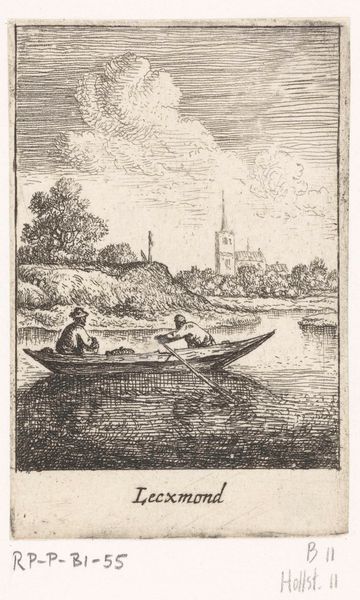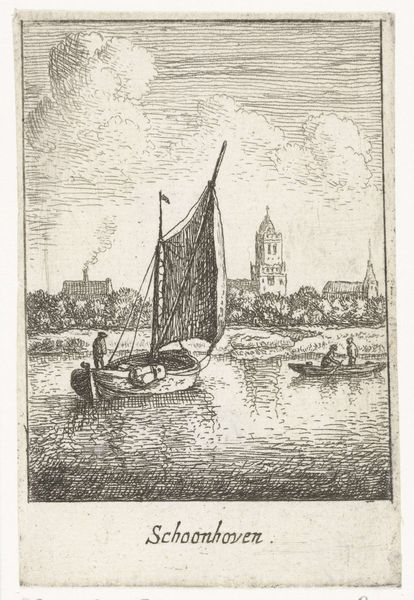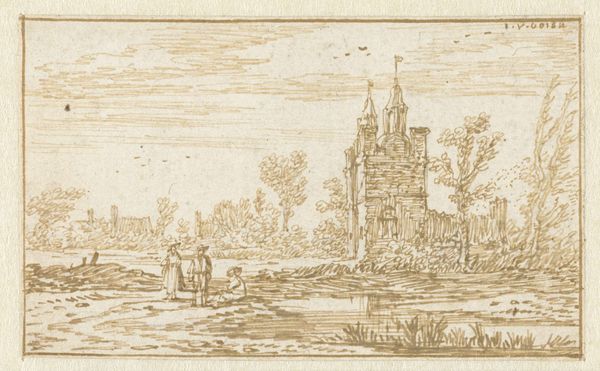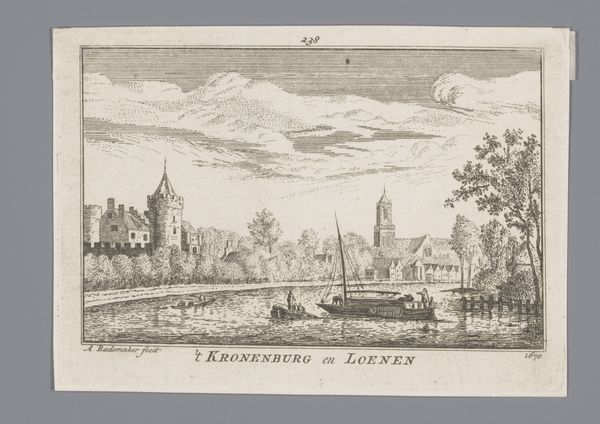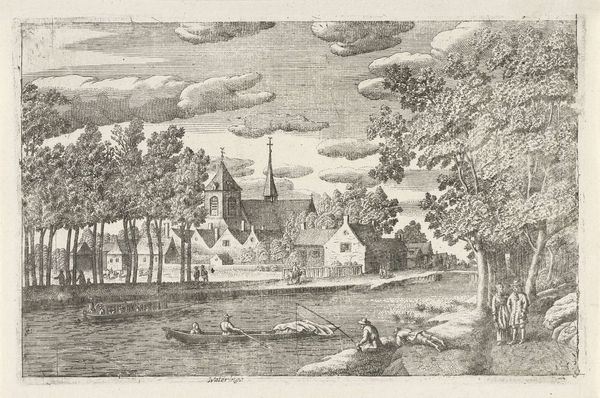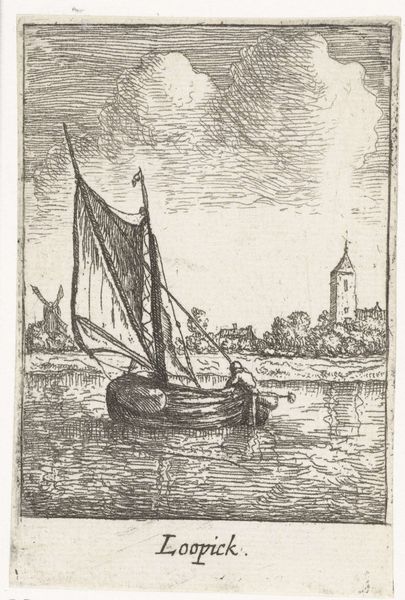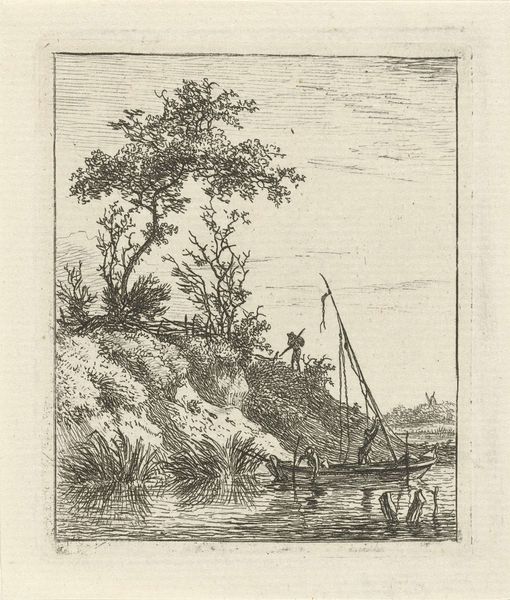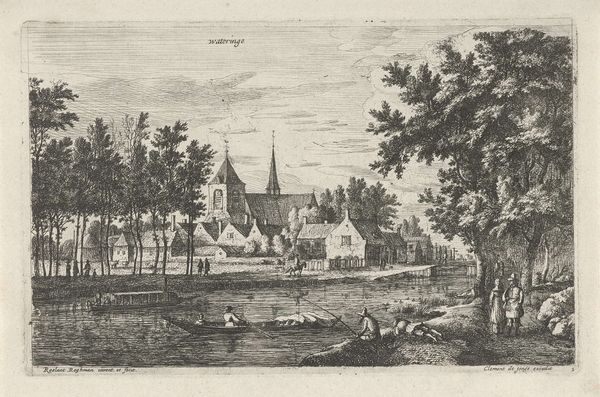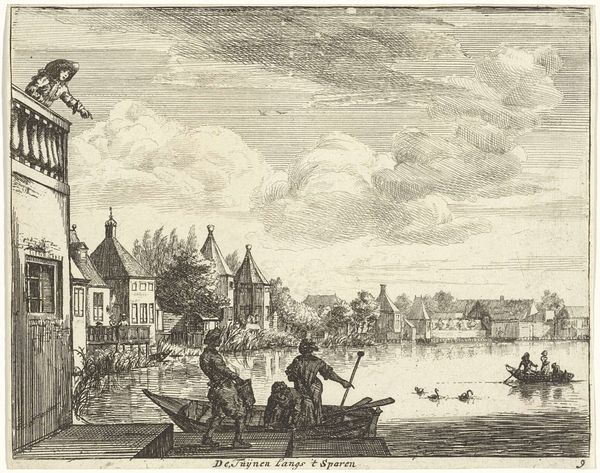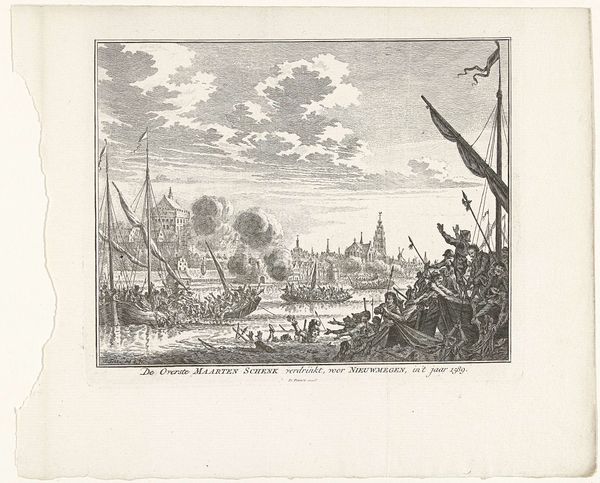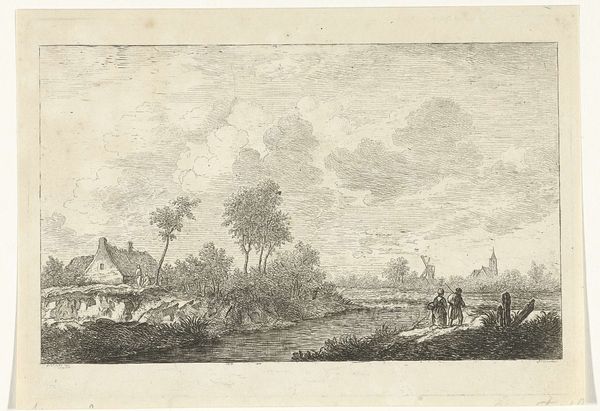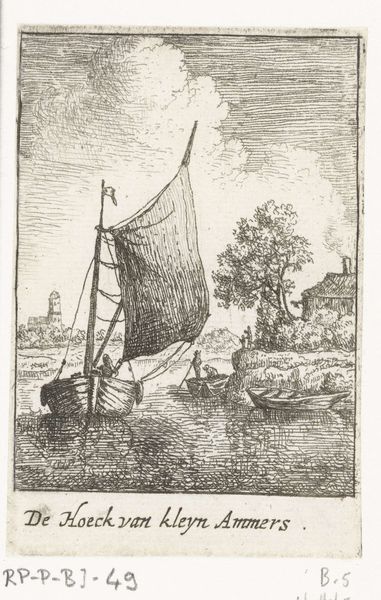
print, engraving
#
dutch-golden-age
# print
#
landscape
#
cityscape
#
genre-painting
#
engraving
Dimensions: height 85 mm, width 55 mm
Copyright: Rijks Museum: Open Domain
Curator: Before us is "Gezicht op Streefkerk" a print by Jan van Almeloveen, created sometime between 1662 and 1683. Editor: It feels serene, almost melancholic. The lines are so delicate, capturing this hazy, muted light. There is something quietly beautiful about it. Curator: Almeloveen’s engraving gives us a glimpse into 17th century Holland. We can think of the cultural, societal, and environmental relationship embodied by the artwork. A landscape reflecting labor and transit. Editor: Absolutely. Water always represents transition, passage. The small boat with those two figures—what is their journey? They look like they might be casting a net, and that points to cycles of sustenance, almost ritualistic labor in the river waters. The steeple rises stoically in the distance. Curator: Considering that steeple, its relationship to both land and figures reinforces existing socioeconomic paradigms during the Dutch Golden Age. The church maintaining power by observing and shaping this maritime community. Editor: I agree, and it’s the relationship between water and steeple that captivates me. Their juxtaposition creates an evocative symbol for community that ties its survival with the resources they cultivate. It's as if that relationship dictates what life is like. Curator: And these power dynamics could be connected with land ownership, access to the waterways, gender, and even the church's view on that labor and economic conditions for these groups within Streefkerk. It reminds us that even landscape is not politically neutral. Editor: Perhaps not, but I'm drawn to something primal and hopeful. Despite its muted tone, this print depicts the eternal interplay between man, nature, and belief, distilled into its simplest, most affecting forms. Curator: These forms serve as a reminder that the legacy of artistic depictions serves as cultural dialogue, that both reflects historical realities and serves to interrogate contemporary existence. Editor: Exactly, images like this reverberate long after their creation.
Comments
No comments
Be the first to comment and join the conversation on the ultimate creative platform.
